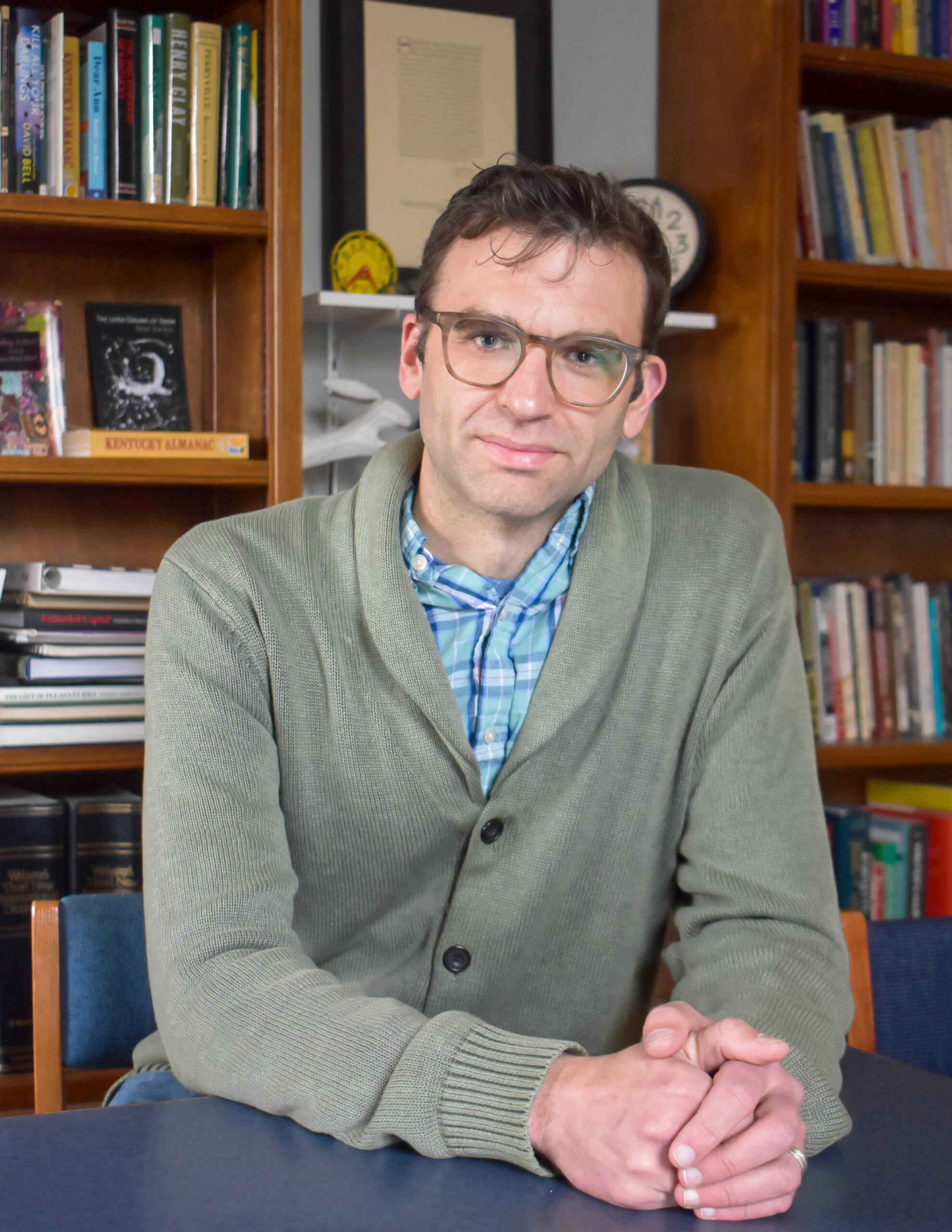By Kevin Nance
With new artificial intelligence programs being introduced seemingly every week over the past several months, alarm bells have been going off in school districts around the country, including Fayette County Public Schools, which is blocking most AI apps. Won’t AI chatbots like ChatGPT — which can write essays, among many other tasks — help students cheat on their homework?


Donnie Piercey, a tech-savvy fifth-grade teacher at Stonewall Elementary School in Lexington and the 2021 Kentucky Teacher of the Year, is already working hard to find out. Increasingly recognized as an expert on the potential of AI in education — ABC’s Good Morning America, PBS NewsHour and the Chicago Tribune recently interviewed him on the topic — he sees artificial intelligence as just the latest of many technological innovations that can be harnessed to engage and inspire young minds.
“Every six months the shiny new thing rolls out,” says Piercey, 41, who teaches reading, writing, science, math and social studies. “Now it’s AI. Ten years ago it was Google apps. Two years before that it was smart boards in every classroom. Two years before that it was the iPad. So it’s a challenge to keep up with the latest trends, but teaching students about the new educational tools now rolling out is a really important part of a teacher’s job nowadays.”



In Piercey’s way of thinking, AI and other technologies (such as YouTube, which was widely blocked by schools early on but is now commonplace in classrooms around the country) aren’t just another way for students to consume information. They can also help students become creators. “With technology, you can collaborate with someone on a document and share it with your classmates,” he says. “Maybe you’ve got a video program on your school Chromebook and you’re learning how to film and edit a video for the first time, or record a podcast. So we just have to find the right balance between consumption and creation.”
Proving his point, Piercey’s own students are currently working on a podcast that will incorporate aspects of artificial intelligence and, in the process, demonstrate some of AI’s capabilities. The students are writing scripts — three-scene radio dramas, set in schools with themes like friendship, bullying, hope, and the importance of family — that they will record and present alongside scripts written by ChatGPT based on the same characters and themes. “We’re going to release two episodes at a time, and the listener won’t be told which one’s written by the AI,” Piercey says. “So the question is, can you tell which one was written by the AI and which one by a fifth grader? It’s a lot more difficult than you think. We’re finding that most adults can’t tell. In one sense, that’s kind of scary. But it another sense, it’s incredible.”


This openness to technological tools in education has been a hallmark of Piercey’s career as a Kentucky elementary school teacher. At Eminence Schools in Henry County, his students noticed that Google Earth’s street views of their town hadn’t been updated in years, he says, “and they wanted to do something about that.” They convinced the school district to purchase a 360-degree virtual reality camera with two fisheye lenses, attached it to a tripod and a backpack and walked the town streets, collecting fresh imagery and then uploading it to Google Earth. “The students loved the fact that those images have been viewed millions of times, and that they could say, ‘We were able to share our community’s story.’”



When Piercey went to Antarctica on a National Geographic Teacher Fellowship in 2018, he
created a series of videos in which expedition leaders and other experts answered his students’ questions about the White Continent. “They wanted to know about the impact of climate change in Antarctica, and how much penguin poop there was,” he recalls. (Answer: a lot. “I can’t get the smell of penguin poop out of my nose.”)
More recently, Piercey’s students used an augmented-reality app to allow school visitors to view a virtual gallery of student art, complete with videos of the artists talking about their creations.
“The great thing about Donnie is the way he’s always showing his students ways to be connected to the real world through technology,” says Toni Konz Tatman, chief communications officer of the Kentucky Department of Education. “He’s not just looking to see what’s out there. He’s looking to see what’s coming.”
What’s not coming, Piercey is confident, is a wave of AI-enabled classroom cheating. He trusts his students, for one thing. And if they’re tempted to cheat, he’ll be ready, aided by yet another technological tool: text-analysis programs that use algorithms that can detect AI-generated prose.
Not that he’s likely to need it. “Eight months into the school year, I know what their voices sound like when they write. If one day they’re writing sentence fragments and the next day they’re turning in essays at a tenth-grade level, I’ll know,” he says. “One concern I have about it is if a student worked their tail off to make sure it was really well written, the AI detector it might flag a sentence. I don’t want that student to have a panic attack and think, ‘Oh my gosh, this means I have to change my writing.’”
This article appears on page 10 of the April 2023 issue of Ace. To subscribe, click here.








